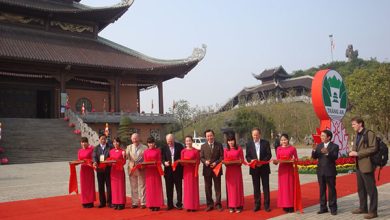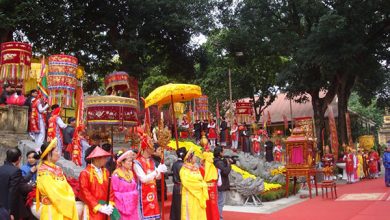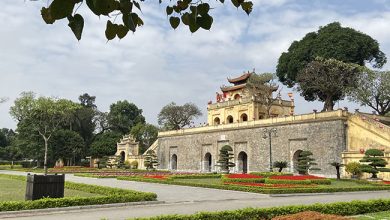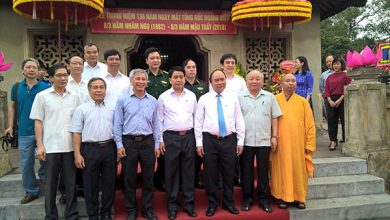Research and Experimental Revival of Ancient Thăng Long Royal Tet Rituals at the Imperial Citadel of Thăng Long
In an effort to preserve and promote the traditional cultural values of humanity, UNESCO has focused significantly on intangible cultural heritage over the past few decades. In 2003, UNESCO announced the “Convention for the Safeguarding of the Intangible Cultural Heritage,” which led to countries starting to register their masterpieces of intangible cultural heritage. Vietnam signed the UNESCO “Convention for the Safeguarding of the Intangible Cultural Heritage” as a member and has implemented numerous programs to preserve and promote intangible cultural heritage. In 2001, the National Assembly of the Socialist Republic of Vietnam passed the Cultural Heritage Law, which for the first time included a chapter on the “Protection and Promotion of Intangible Cultural Heritage.”
The most fundamental characteristic of intangible cultural heritage is that it does not primarily exist in physical form (excluding some forms that have been documented) but resides in human memory and consciousness and is expressed through human behavior and activities within a specific performance environment.
Preserving intangible cultural heritage is of utmost importance, especially considering its rapid loss due to societal changes toward industrialization and modernization. At the World Heritage site of the Central Sector of the Imperial Citadel of Thăng Long – Hanoi, efforts to research, preserve, and promote the values of intangible cultural heritage have also been emphasized. Since its inscription in 2010, the Thăng Long – Hanoi Heritage Conservation Center has actively promoted research into the intangible cultural heritage of the Thăng Long Royal Court and has achieved many initial successes. Intangible cultural heritage of the royal court is seen as the foundation to revive and illuminate the heritage. It is incredibly rich, including rituals, festivals, games, and performances, all refined into the nation’s elite culture. The royal court rituals and performances took place in the sacred space of the heritage site, primarily along the central axis and the space of the Kính Thiên Palace. Some spring royal rituals have been researched and experimented with through display interpretations and ritual reenactments to serve visitors and effectively preserve and promote the cultural values of 1,000 years of Thăng Long – Hanoi.
The Tet rituals began at the end of the 12th lunar month of the old year and extended into the first lunar month of the new year. In ancient Thăng Long royal court, a series of unique spring royal rituals were formed, including the Kitchen God worship ceremony, the calendar presentation ceremony, the Spring Ox presentation ceremony, the seal closing ceremony, the ceremony of setting up and taking down the New Year’s tree, and the seal opening ceremony.
The Kitchen Gods Worship Ceremony
Worshiping the Kitchen Gods is a long-standing custom in Vietnam. According to legend, the Land Deity (Ông Công) is the god who oversees the household land, while the Kitchen Gods (Ông Táo) consist of three kitchen guardians who take care of household affairs. These deities are believed to be sent by the Jade Emperor (Ông Trời) to observe and record the good and bad deeds of humans. Every year, on the 23rd day of the 12th lunar month, these gods ride carp back to the Heavenly Court to report on all the good and bad deeds of humans over the past year, allowing the Jade Emperor to judge their actions.
In Vietnamese culture, the image of the “carp crossing the Vũ Môn” or “carp transforming into a dragon” also symbolizes transcendence, representing the spirit of overcoming challenges, perseverance, and dedication to conquering knowledge to achieve success. It is a symbol of hidden noble character or striving towards a positive outcome.
Traditionally, the 23rd day of the 12th lunar month is the day to bid farewell to the Kitchen Gods as they return to the Heavenly Court to report on the household’s affairs to the Jade Emperor. Both in folk traditions and the royal court, people prepare offerings to present to the Kitchen Gods.
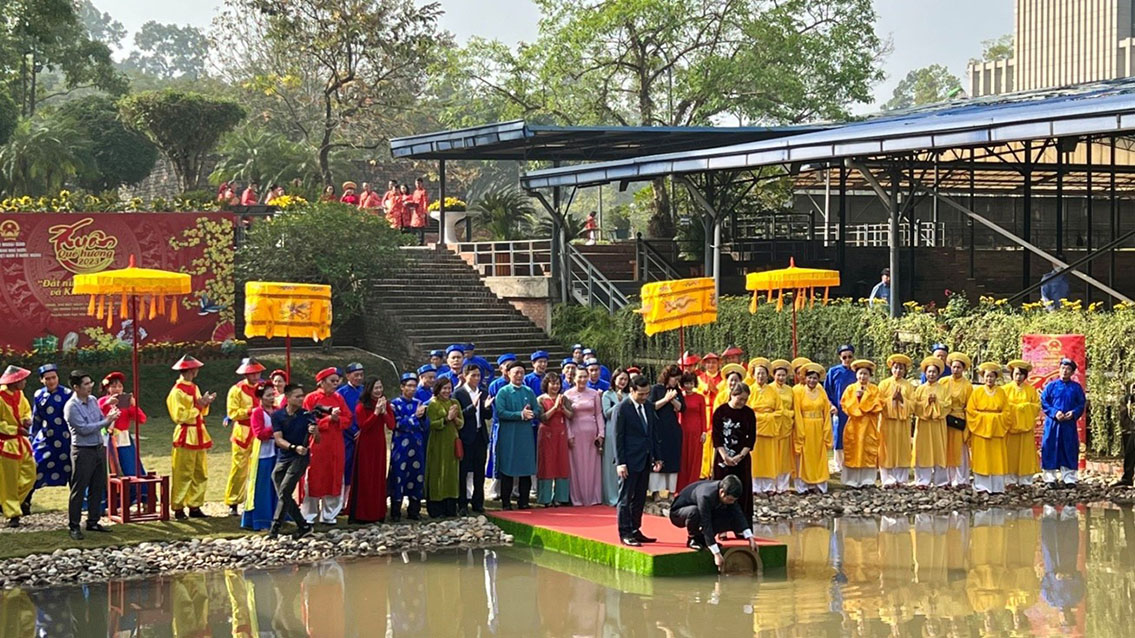
Carp Release Ceremony at the Ancient River in the Archaeological Site of 18 Hoàng Diệu
Calendar Presentation Ceremony
In the dynasties of the East, the king considered himself the “Son of Heaven,” the intermediary between Heaven and the people, responsible for creating and distributing the calendar. This allowed people to know the time and weather for agricultural activities, ceremonies, and stabilizing their lives. As early as the Lý Dynasty, an observatory was established to calculate time. Annually, on the 24th day of the 12th lunar month, the court held the Calendar Presentation Ceremony to offer the royal calendar to the king and distribute it to officials and localities.
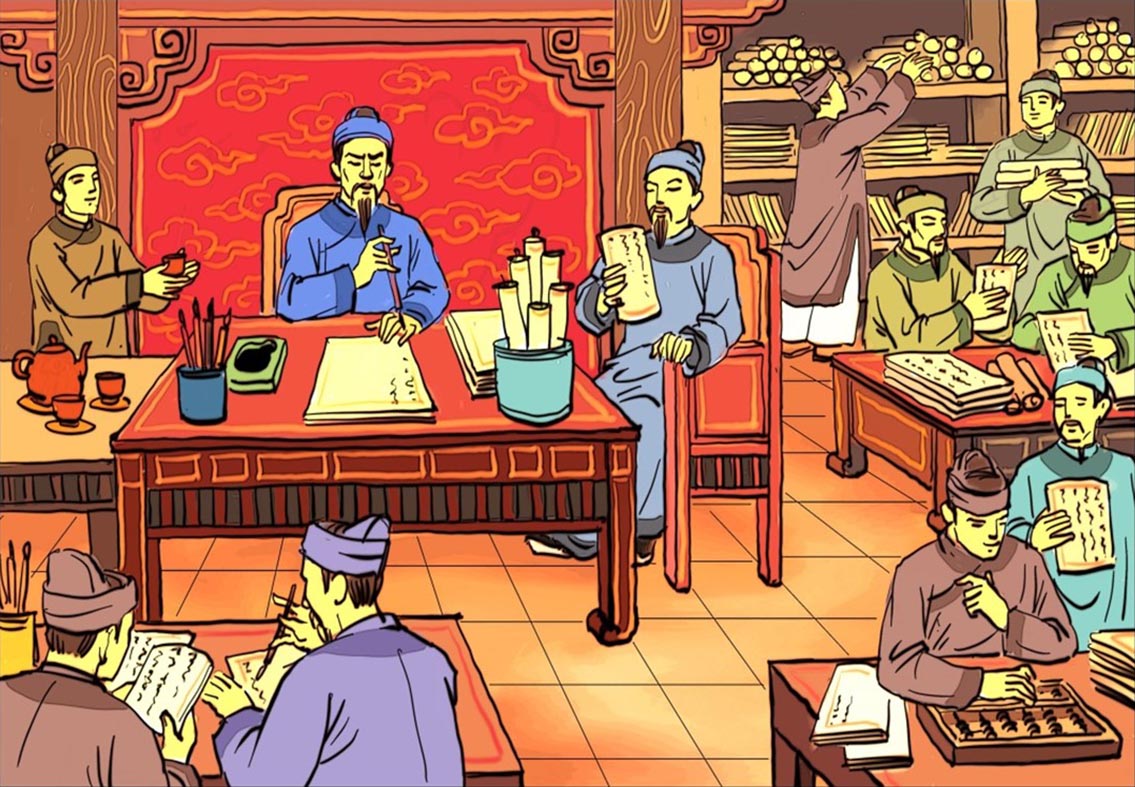
Illustration: The Imperial Astronomical Bureau Compiling the Calendar
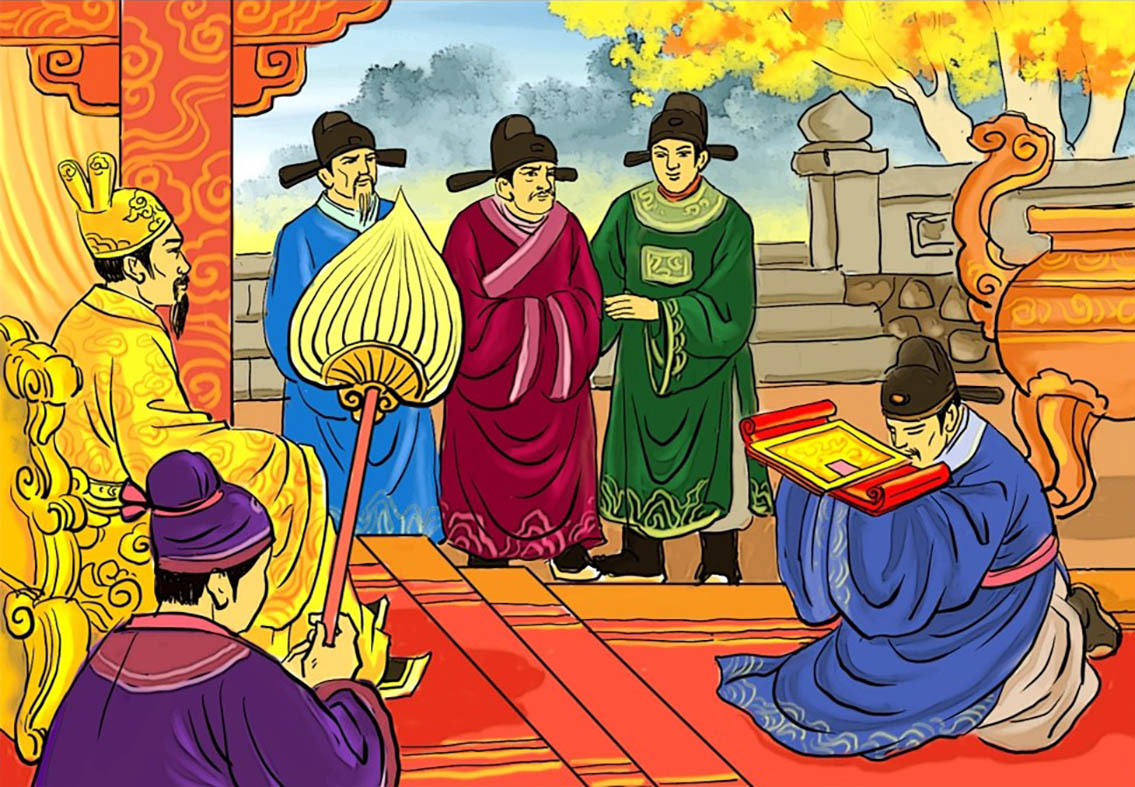
The Imperial Astronomer Presenting the Royal Calendar

Reenactment of the Calendar Presentation Ceremony
Spring Ox Presentation Ceremony
During the Revival Lê dynasty, the Spring Ox Presentation Ceremony was a major event combining royal and folk elements. Carefully prepared and solemnly conducted by the court on the first day of spring, this ceremony involved presenting a clay ox as a symbolic act to expel cold weather. Annually, in spring, the ritual is reenacted with a procession of the Spring Ox from the Đoan Môn gate to the courtyard of the Kính Thiên Palace, where it is presented to the officials.
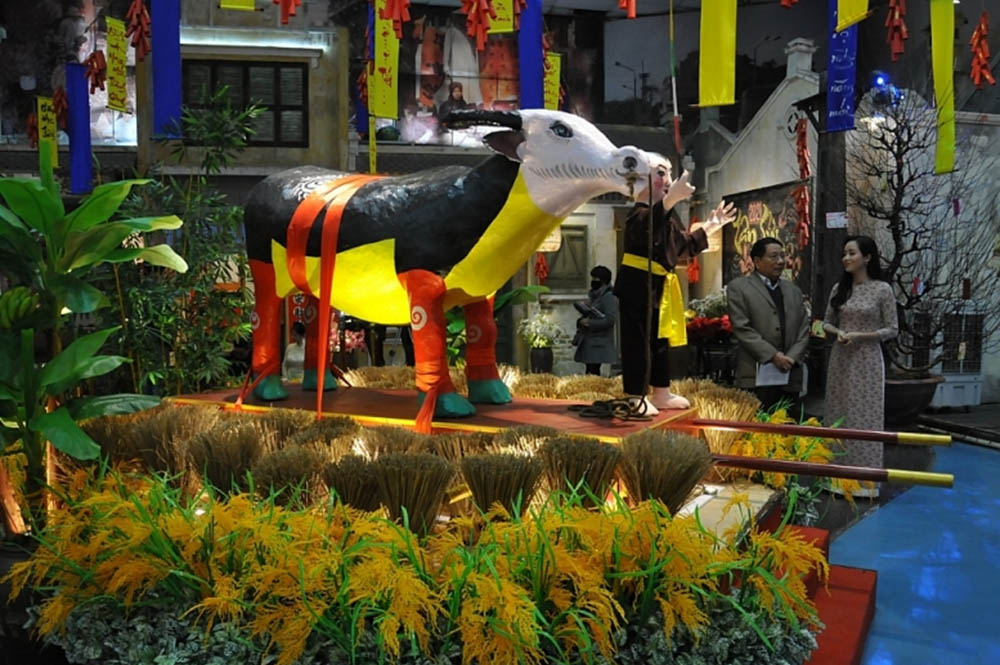
Model Reconstruction of the Spring Ox
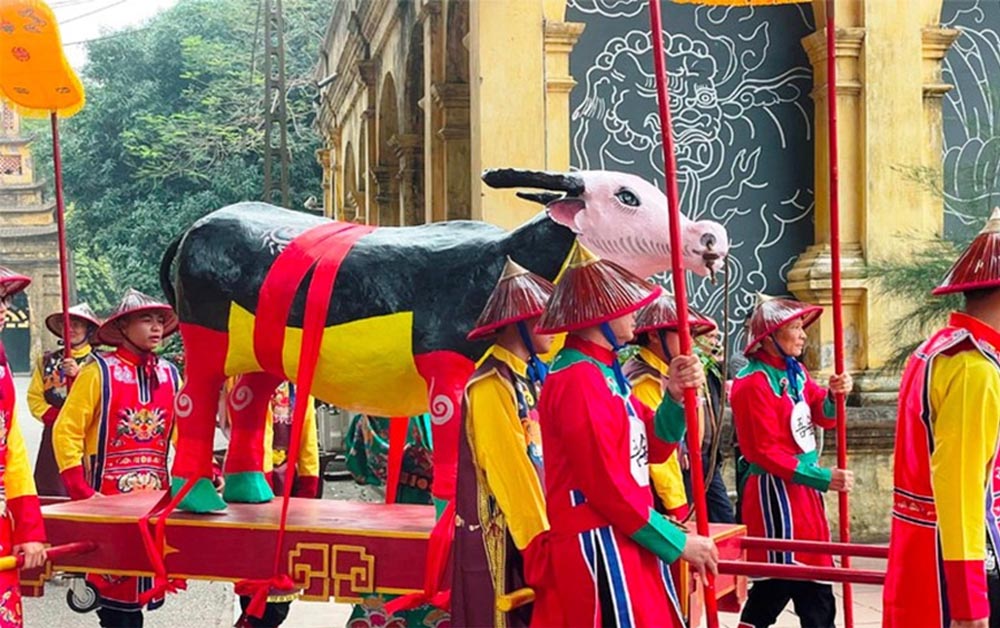
Procession of the Spring Ox into the Courtyard of Kính Thiên Palace
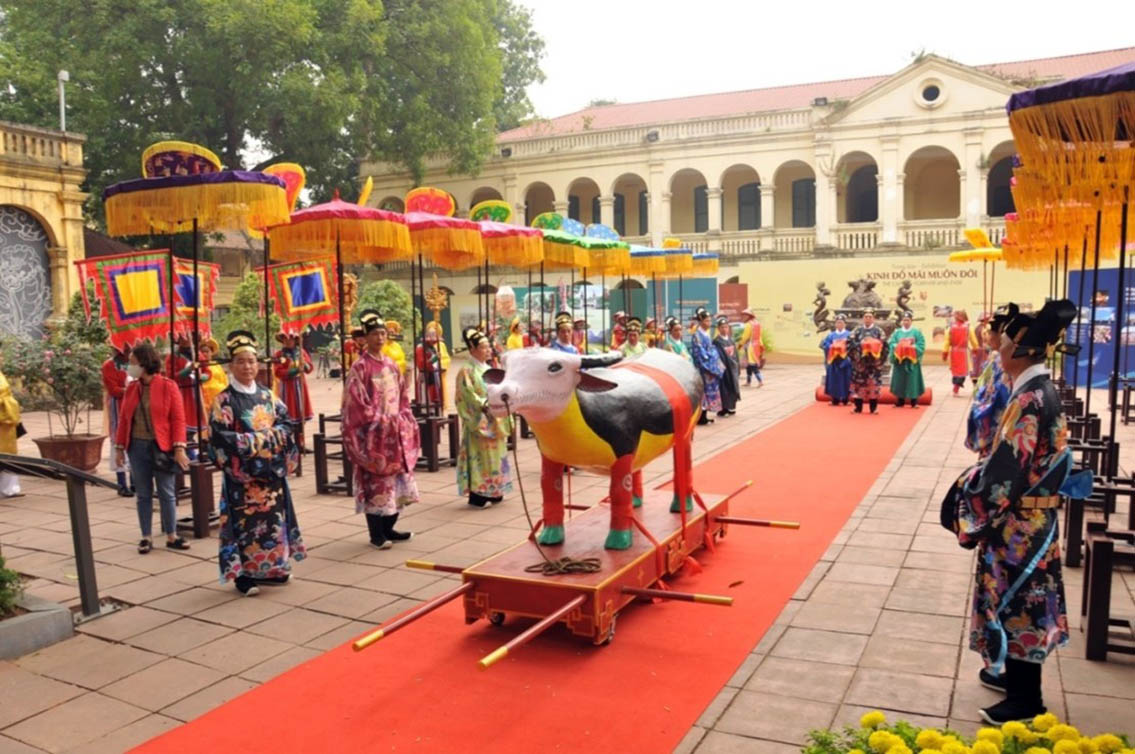
Reenactment of the Spring Ox Presentation Ceremony
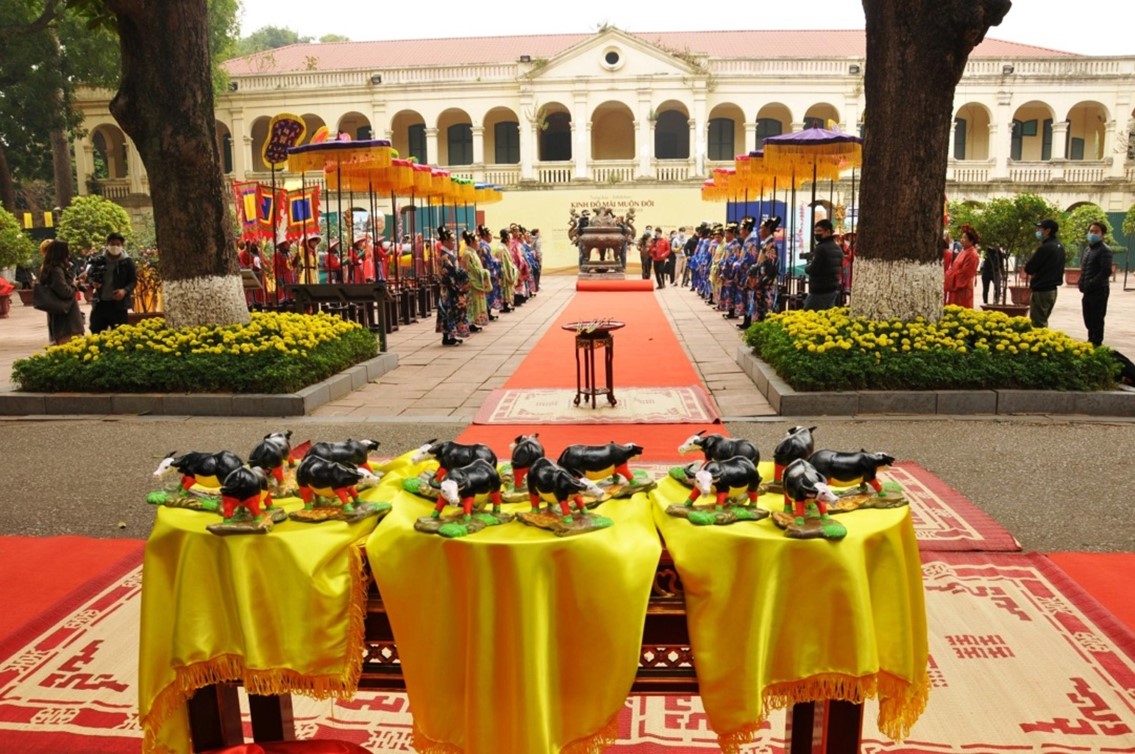
Small Model of the Spring Ox in the Reenactment Ceremony
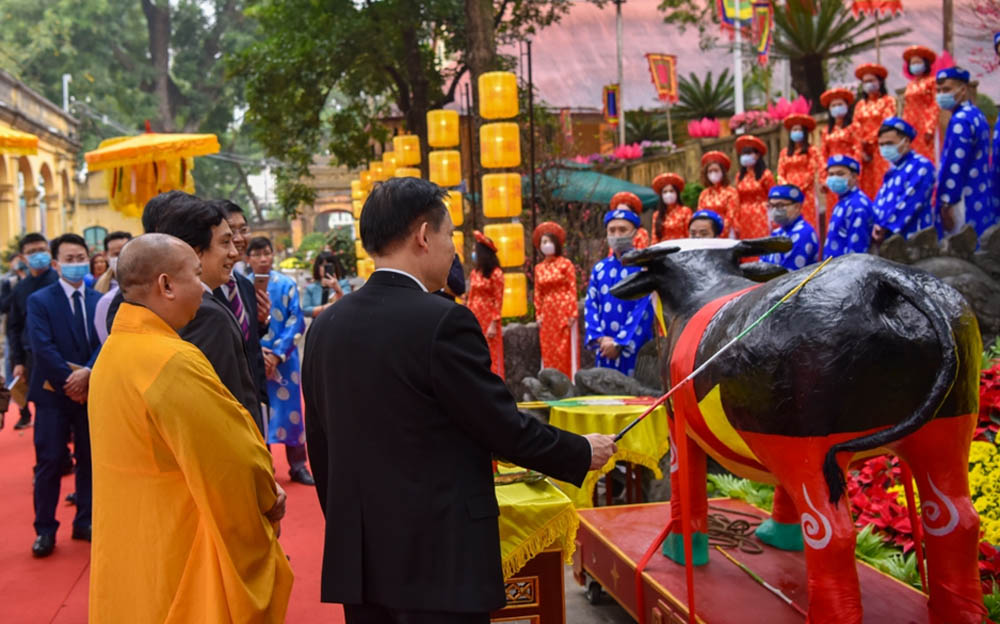
Performing the Spring Ox Beating Ritual
New Year’s Tree Planting and Lowering Ceremony
The New Year’s Tree (cây nêu) erection is an important royal ritual indispensable during the Tet festival, documented since the Lê Trung Hưng period. Records indicate that on the 30th day of the 12th lunar month, the New Year’s Tree was erected in the royal palace, the chancellor’s residence, and the officials’ mansions, followed by common households. On the 7th day of the first lunar month, the court organized the lowering of the New Year’s Tree, marking the end of the New Year’s celebrations.
As an annual tradition, on the 23rd day of the 12th lunar month, the Thăng Long Heritage Conservation Center, along with visitors, joyfully conducts the New Year’s Tree erection ceremony at the Đoan Môn gate and the tree lowering ceremony on the 7th day of Tet.

Ritual of Offering to the Deities Before Erecting the New Year’s Tree At the Imperial Citadel of Thăng Long
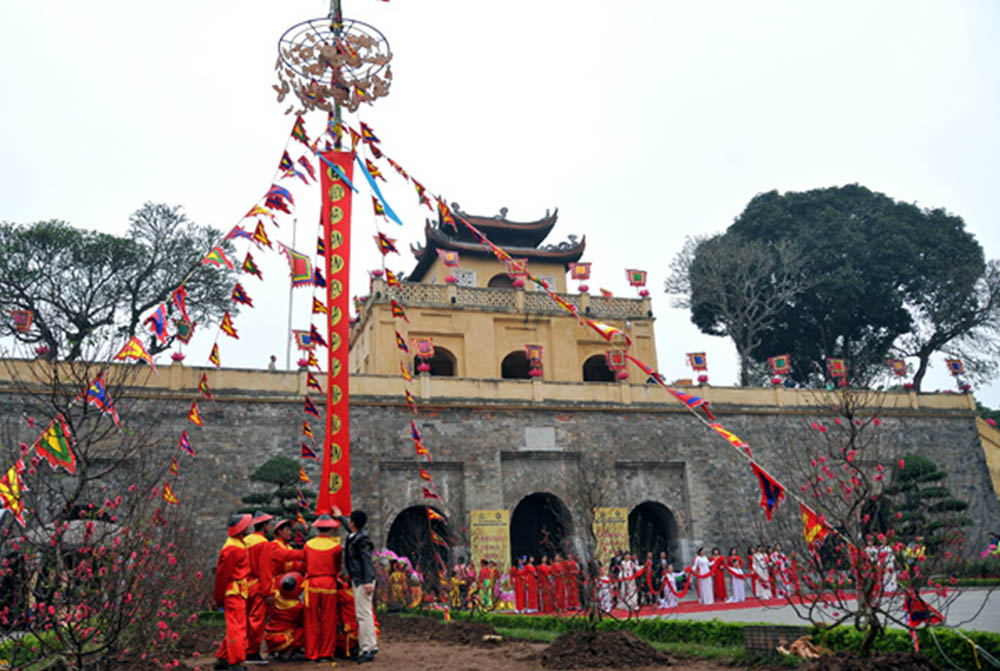
New Year’s Tree in Front of Đoan Môn Gate

New Year’s Tree Lowering Ceremony at the Imperial Citadel of Thăng Long
Researching, preserving, and promoting the intangible cultural heritage of the royal court is crucial. It contributes to building a unique image and identity for the Imperial Citadel of Thăng Long, laying the foundation for tourism development.
Department for Heritage Research and Collection
Thang Long – Hanoi Heritage Conservation Center

